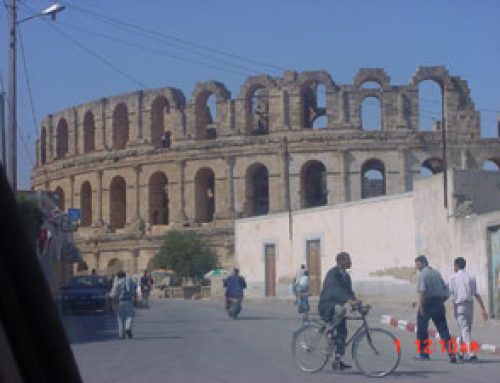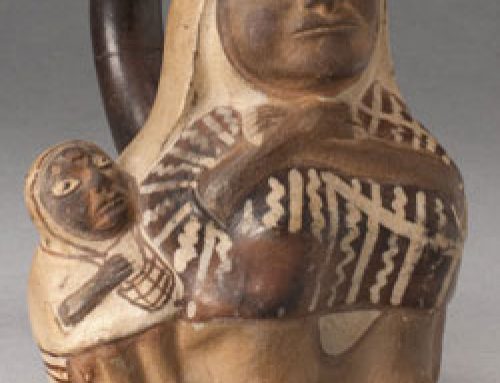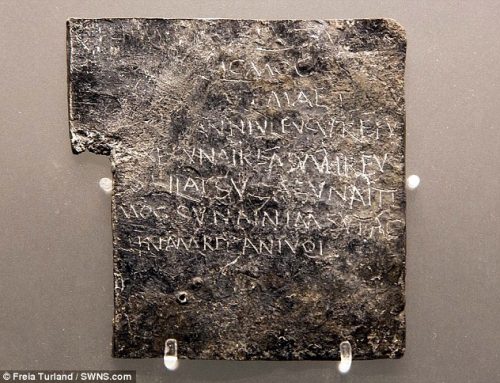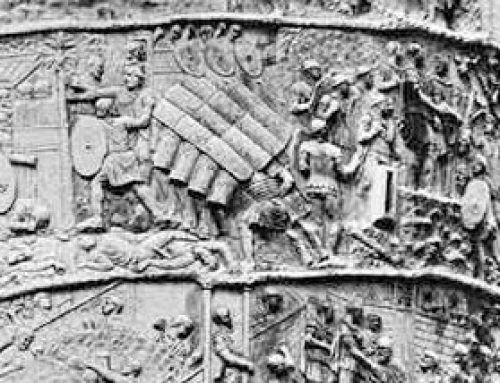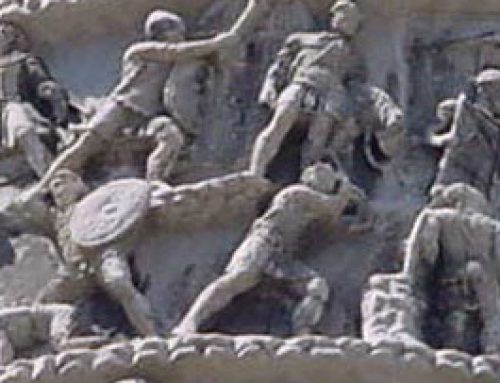
A Roman shepherd, probably a slave (Istanbul, 500s AD)
Many Roman people were owned by other people, or by the Roman government, as slaves. Because the Romans didn’t really have hourly wage work, or salaried work, as we do now, men and women who didn’t own their own land and didn’t own businesses of their own were often enslaved. The jobs slaves did were jobs which today in the United States are done by free people working for wages. Like today, some of these jobs were awful, and some of them were pretty good.
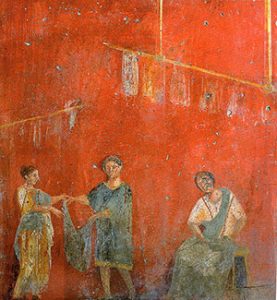
Women hanging up clothes to dry (Pompeii, before 79 AD)
Slavery and farming
Many of these men and women, especially in southern France and Spain, worked in the fields, on big farms owned by rich men and women. On these farms (called latifundia), a slave or freedman overseer forced hundreds or thousands of slaves to work out in the fields all day under the sun, and at night the slaves sometimes slept in barracks, with the men separated from the women. Not so many people work in farming today, but those that do are still often very poor, and often – if they are migrant laborers, for instance – sleep in barracks.

Slave collar with tag asking the finder to return the slave
Mining and the galleys
Other slaves were forced to work deep underground in the mines, getting gold or silver or copper or iron or tin for the Roman government. They also suffered and died after just a few years. The Roman government, and private traders, owned many men who rowed ships as slaves, often chained to their oars. Many of these men were sentenced to the mines or to the ships because they were criminals. We don’t use men to power ships anymore, and we don’t send criminals to the mines, but miners still have difficult and very dangerous work.
Service work and slavery
Other slaves did not work in the fields or the mines. Instead, they were house servants for richer people – nannies, nurses, cooks, butlers, house-cleaners, stable-boys for the horses, laundry-women, tutors for children, accountants. This was not necessarily such a terrible life, or so different from the lives of nannies, cooks, or house-cleaners today. These slaves often did have families, though they could never be sure of keeping them. Children who were slaves were often sold away from their parents, and even these slaves were often beaten and poorly fed.
Slavery and manufacturing
A lot of slaves also worked in factories or craft shops. They might be weavers, or dyers, or potters, or mosaicists, for example. Some slaves worked in construction, and some sold things in perfume stores or cloth stores. Or, slaves might work for the Roman government as accountants or as guards, or chopping wood to heat the baths.
Many of these slaves were freed when they got older (if they lived that long) and became Roman citizens. They were known as freedmen and freedwomen.
